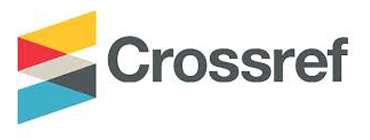THE EFFECT OF WHOLE BRAIN TEACHING STRATEGY ON THE STUDENTS’ SIMPLE PRESENT TENSE MASTERY AT THE EIGHTH GRADE OF SMP NEGERI 5 TAKENGON
Abstract
This research aims to find out whether the whole brain teaching strategy has a significant difference in students' simple present tense mastery between students who taught by whole brain teaching strategy and those who taught by using the conventional strategy at eighth grade of SMP Negeri 5 Takengon. This research uses the quantitative research method (quasi-experimental research). The population of this research was the eighth grade of SMP Negeri 5 Takengon. There were four classes in the eighth grade and the researcher took two classes for the sample. There were 16 students for the experimental class and there were also 16 students for the control class. The instrument for collecting the data in this research was tested in the multiple-choice form. Before conducting the treatment, the researcher gave a pre-test and a post-test. In treatment, students in the experimental class were taught by using the whole brain teaching strategy and students in the control class were taught by lecture or conventional strategy. The result of this study shows that Ho is accepted and Ha is rejected. So, it can be concluded that there is no significant difference in students' simple present tense mastery between students who taught by the whole-brain teaching strategy and the conventional strategy at eighth grade of SMP Negeri 5 Takengon.
Keywords: Whole Brain Teaching Strategy, Conventional Strategy, Simple Present Tense Master
Full Text:
PDFReferences
Abdurrahman bin Nashir as-Sa’di, S. 2012. Tafsir Al-Qur’an. Jakarta: Darul Haq
Biffle, C. (2013). Whole Brain Teaching for Challenging Kids. NA: Whole Brain Teaching
Brown, H, D. (2004), Language Assessment Principles and Classroom Practice, Cohen, L., Manion, L. & Morison, K, (2007), Research Method in Education, London: Routledge
Daulay, S. H. (2008) Let’s Study English. Bandung: Cipta Custaka Media
Eastwood, J. (2008). Oxford Learner’s Pocket Grammar. New York: New York University Press
Fitiani, R..(2010). English Grammar. Bandung: Cipta Pustaka Media Printis Kousar, R. (2010). The Effect of Direct Instruction Model on Intermediate Class
Achievement and Attitudes Toward English Grammer. Journal of College Teaching & Learning, v7n2p99.
Macias, A. & Macias, B. (2013) Whole brain teaching and learning research. In C. Biffle (Ed.), Whole Brain Teaching for Challenging Kids (pp. 178-189)
Pattison, P., & Day, R. (2006). Instruction Skills Workshop (ISW) Handbook for Participants. Vancouver: The Instructional Skills Workshop International Advisory Committee.
Rohani, A. and Ahmadi, A. (2007). Pengelolaan Pengajaran. Jakarta : Rineka Cipta.
Saidvaliyevna, I. Z. 2018. “The Role of Grammar in Learning English Language. Pedagogical Sciences Magazine: Eurasian Scientific Journal. http://journalpro.ru on 05 January 2021
Salim and Syahrum. (2007), Metodologi Penelitian Kuantitatif, Bandung: Citapustaka Media
Sanchez, H. (2017). The Education Revolution: How to Apply Brain Science to Improve Instruction and School Climate. Thousand Oaks, California: Corwin, a Sage Company.
Sesmiarni, Z. (2015). Brain Based Teaching Model as Transformation of Learning Paradigm in Higher Education. Al-Ta lim Journal, 22(3), 266-275. https://doi.org/10.15548/jt.v22i3.141
Sontillano, R. D. (2018). Impact of Whole Brain Teaching Based Intruction on Academic Performance of Grade 8 students in Algebra: Compendium of WBT-Based Lesson Plans. International Journal of Teaching, Education and Learning, 2(2), 98-114.
Sudjana S, (2005), Strategi Pembelajaran, Bandung : Falah Production Wilkinson, G and Hariyanto, D. (2004), Complete English Grammar; Special Edition. Jakarta: Pustaka Indonesia.
English Grammar: Important of Tenses. www.lingualinkdc.net/blog/grammar-tenses/. On 10 February 2021
Refbacks
- There are currently no refbacks.

This work is licensed under a Creative Commons Attribution-NonCommercial-ShareAlike 4.0 International License.
INDEXING
Bright Vision by UIN Sumatera Utara Medan is licensed under a Creative Commons Attribution-NonCommercial-ShareAlike 4.0 International License.
Based on a work at http://jurnaltarbiyah.uinsu.ac.id/index.php/brightvision.









